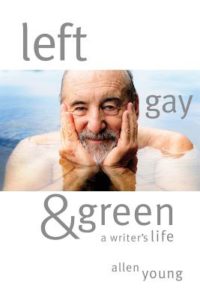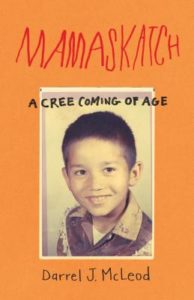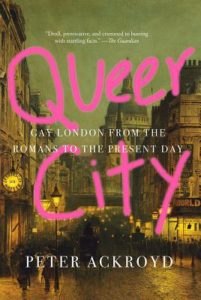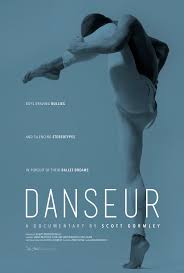 Left, Gay, & Green: A Writer’s Life
Left, Gay, & Green: A Writer’s Life
by Allen Young
CreateSpace. 478 pages, $25.
Allen Young uses the three words in this title to help define his long, estimable life of activism. Born to chicken farmers in rural New York, Young took advantage of his intelligence, ambition, and socialist background to get into Columbia University and to find work in Latin America and then in Washington, D.C., as a journalist. No longer able to deny his homosexuality, he joined the fledgling Gay Liberation Front right after the Stonewall Riots in New York. Along with lesbian scholar and activist Karla Jay, Young produced a series of early, influential, and still useful anthologies about LGBT life and thought, which sold widely as paperbacks. That led him join with friends in 1973 to buy land and to form a gay commune in Massachusetts, which they named Butterworth Farm.
While continuing to write as a journalist and for a local hospital near the commune, Young became aware of the many diverse forces surrounding the Quabbin Reservoir and its neighbors, which led to his column about ecology. The spanning of so many decades means the reader encounters a great many names and places, organizations, and movements. Young handles these gracefully and in just enough depth to establish their place in history and to guide future scholars. A life so active and wide-ranging is seldom free of controversies. These he has tackled head-on, avoiding unnecessary conflict. Although nearly 500 hundred pages is a lot, Left, Gay, & Green is breezy reading and a good model for future autobiographers.
Felice Picano
 Mamaskatch: A Cree Coming of Age
Mamaskatch: A Cree Coming of Age
by Darrel J. McLeod
Milkweed Editions. 240 pages, $16.
This memoir by writer and teacher Darrel J. McLeod, which won the Canadian Governor General’s Literary Award in 2018, describes, often in graphic detail, the traumas that are probably typical for a Cree boy of his generation. His father died young and his mother and stepfather were alcoholics, the mother an especially abusive drunk. McLeod sustained a prolonged period of sexual abuse by an older male in-law, during which he struggled with conflicting feelings for the man. Arching over all of his and his family’s problems was their marginal status as Cree Indians and the omnipresent poverty that confined them. McLeod also had to reconcile his developing gay identity, which would not be ignored, with his concurrent embrace of fundamentalist Christianity for a long part of his youth. His dream of pursuing a career in medicine was sidelined, and he witnessed the slow but relentless disintegration of his family.
Discrimination takes myriad forms for a gay Cree man—in hiring, education, language, and even in romances with other men. Yet despite the decay of the hegemonic culture surrounding him, there are elements of hope. McLeod’s generation has more opportunities for upward mobility, certainly compared to his mother and aunts who grew up in Canada’s infamous “residential schools,” where children were brutalized for offenses such as speaking their own language. This hope is reflected in the picture selected for the book’s cover: McLeod as a young boy with an eager smile on his face.
Peter Marino
 Queer City: Gay London from the Romans to the Present Day
Queer City: Gay London from the Romans to the Present Day
by Peter Ackroyd
Abrams Press. 257 pages, $26.
Eighteen years ago, Peter Ackroyd published London: The Biography, a massive, far-ranging tome that can probably stand with anything else written about the British capital. Sex and its varieties occupied only one short chapter; in this new volume, he’s written a concise history of “gay London” over two millennia. He begins with Londonium, the Roman city at the northern extreme of the Empire, and continues chronologically up to recent times. We learn, for example, that Chaucer included gay characters in Canterbury Tales in the 14th century, notably the Pardoner, who may also have been transgender. Actual historical figures named by Ackroyd include British monarchs such as Richard the Lionheart and Edward II, among others, as well as Elizabethan-era notables and 18th-century peers and entrepreneurs. He’s reticent about the Romantic poets and the Victorian era in general, until we get to the Cleveland Street rent boy scandal and the Oscar Wilde trials of the late 19th century.
Closer to our time, he writes: “it is arguable that in the first half of the 20th century, gays of both sexes were subjected to a level of prejudice and intolerance not seen before in Western history: entrapment, imprisonment and sudden police raids became familiar characteristics of London life.” That seems accurate but belies his book’s title. Was London ever really a “queer city”? That said, this is a good general introduction to homosexuality in England and itself a useful guide and resource for deeper investigation.
Felice Picano
The main theme of this documentary is the homophobia that male ballet dancers endure when young, but I suspect many viewers will appreciate the eye candy of twenty-something male dancers at the top of their game. But behind these fat-free bodies is a lifetime of physical sacrifice, and this film drives home the extent to which the path to a top ballet company is grueling and relentless. And it doesn’t stop at the barre; these guys spend hours at the gym pumping iron to develop the muscles needed to carry ballerinas over their heads. The best scenes in Danseur are those showing the dancers honing their craft. We marvel at their ability to move, but how do they remember all those complicated sequences of steps? Much of the film consists of interviews with the dozen-or-so dancers, including some famous ones, such as James Whiteside. The tales of being bullied in high school are heartbreaking and iterative. Some of the abuse was probably just for being gay, but the dancing does seem to have added a new quantum of cruelty. Still, they endured, and this is their story.
Richard Schneider Jr.







